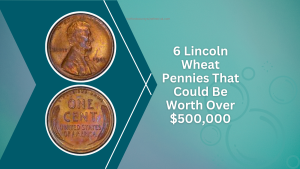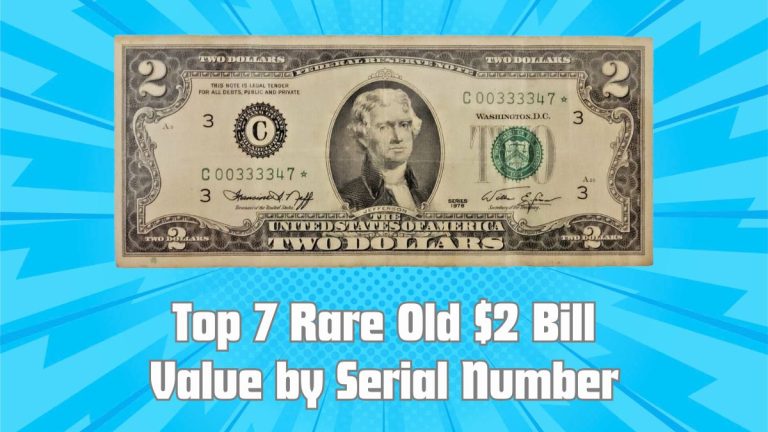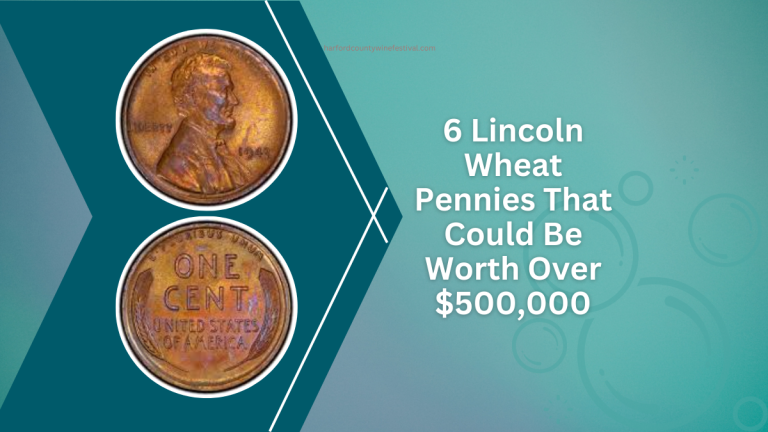The Lincoln Wheat Penny, minted from 1909 to 1958, holds a special place in American numismatics. Among these, certain rare specimens have fetched astonishing prices at auctions, with some valued at up to $840,000. This article delves into the history, rarity, and potential for these valuable pennies to still be in circulation.
A Brief History of the Lincoln Wheat Penny
Introduced in 1909 to commemorate the centennial of Abraham Lincoln’s birth, the Lincoln Wheat Penny was the first U.S. coin to feature a president’s likeness. Designed by Victor David Brenner, the obverse showcases Lincoln’s profile, while the reverse displays two wheat stalks, symbolizing prosperity. These pennies were minted until 1958, after which the design transitioned to the Lincoln Memorial reverse.
The Rarity and Value of Specific Lincoln Wheat Pennies
While millions of Lincoln Wheat Pennies were produced, certain variations are exceptionally rare due to minting errors or limited production runs. These anomalies have made them highly sought after by collectors.
Here are some of the most valuable Lincoln Wheat Pennies:
| Year | Mint Mark | Distinct Feature | Estimated Value Range |
|---|---|---|---|
| 1943 | D | Bronze planchet error | $800,000 – $1,700,000 |
| 1943 | S | Bronze planchet error | Up to $504,000 |
| 1944 | S | Steel planchet error | $408,000 |
| 1955 | None | Doubled die obverse | $114,000 |
| 1909 | S VDB | First-year issue with initials | $168,000 |
The 1943-D Bronze Lincoln Wheat Penny
Among these, the 1943-D bronze penny stands out due to its extraordinary value and rarity. During World War II, copper was essential for wartime production, leading the U.S. Mint to produce pennies from zinc-coated steel in 1943.
However, a few bronze planchets from previous years were mistakenly used, resulting in the rare 1943 bronze pennies. The Denver Mint’s version, the 1943-D, is particularly scarce, with only one confirmed specimen known to exist. This coin has fetched prices ranging from $800,000 to $1.7 million at auctions.
Could These Rare Pennies Still Be in Circulation?
The possibility, albeit slim, exists that some of these rare pennies remain undiscovered in circulation. Over the years, many have been found in pocket change, attics, or inherited collections. Given their high value, it’s worthwhile to examine your pennies, especially those from the 1940s and 1950s.
Identifying Valuable Lincoln Wheat Pennies
To determine if you possess a valuable Lincoln Wheat Penny, consider the following steps:
- Check the Date and Mint Mark: Look for pennies minted in 1943 and 1944, paying close attention to the mint mark (D for Denver, S for San Francisco, or no mark for Philadelphia).
- Assess the Material: In 1943, pennies were typically made of steel. If you find a 1943 penny that appears bronze, it could be a rare error coin. Conversely, 1944 pennies were usually bronze; a steel 1944 penny is equally rare.
- Examine for Errors: Look for anomalies such as doubled die obverses, where the images or inscriptions appear doubled. The 1955 doubled die obverse is a prime example of a valuable error.
- Consult a Professional: If you believe you’ve found a rare penny, have it authenticated and graded by a professional coin grading service to determine its value accurately.
Preserving and Valuing Your Coins
The condition of a coin significantly impacts its value. Coins are graded on a scale from poor to mint state, with higher-grade coins commanding higher prices. Proper storage—such as using coin holders and keeping them in a controlled environment—can help preserve a coin’s condition.
While the chances are slim, it’s not impossible that a rare Lincoln Wheat Penny could still be hiding in plain sight. Regularly checking your pocket change and coin collections could potentially yield a valuable find. Given the substantial value these coins can hold, a moment spent examining your pennies could be well worth the effort.
FAQs
What makes the 1943-D bronze penny so valuable?
Its rarity, being one of the few bronze pennies mistakenly minted in 1943, and the fact that only one confirmed specimen exists contribute to its high value.
How can I tell if my 1943 penny is bronze or steel?
A simple test involves using a magnet; steel pennies will be attracted to a magnet, while bronze ones will not.
Are all 1943 pennies valuable?
No, only the error coins minted on bronze planchets are highly valuable. The common steel 1943 pennies are not particularly valuable.







